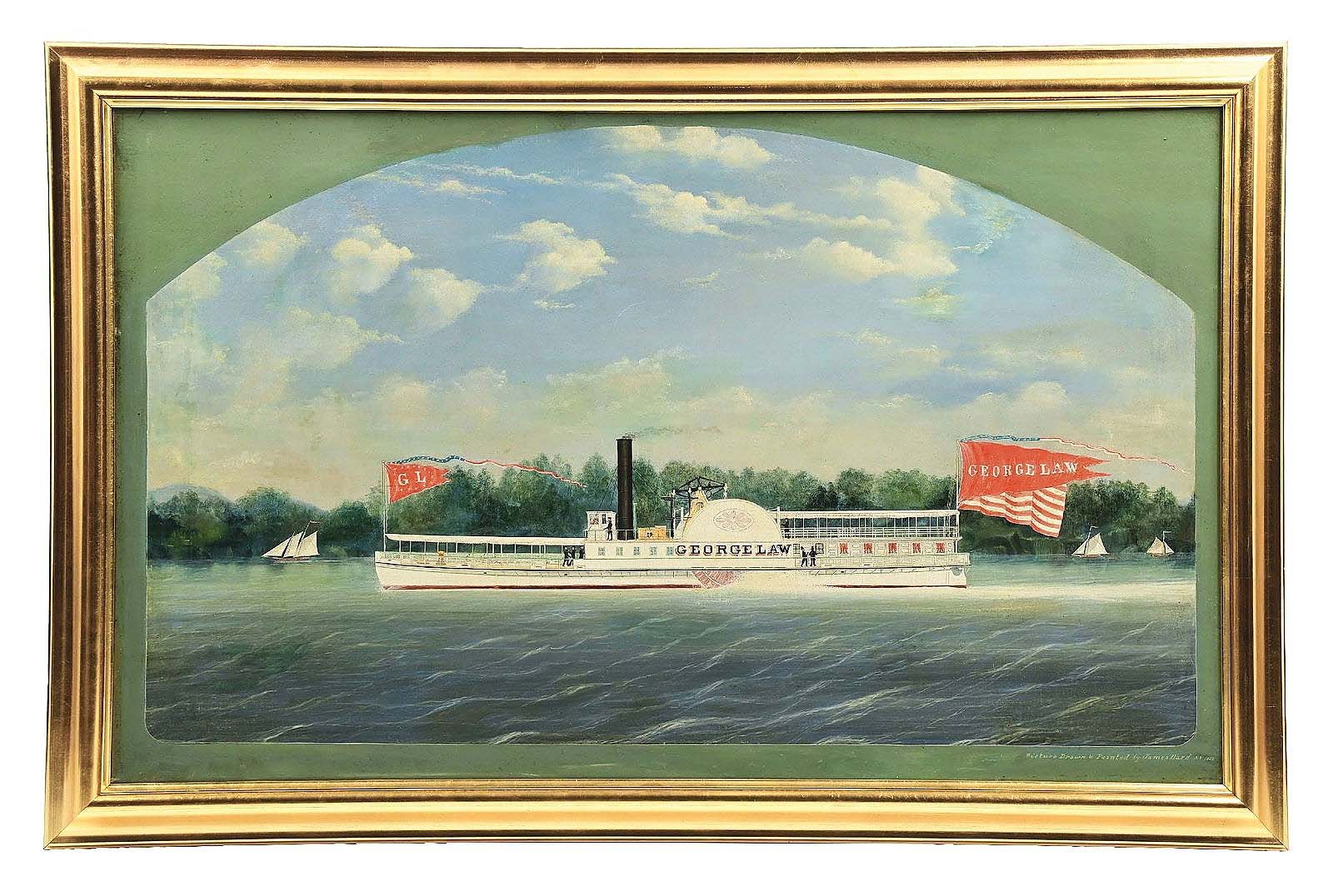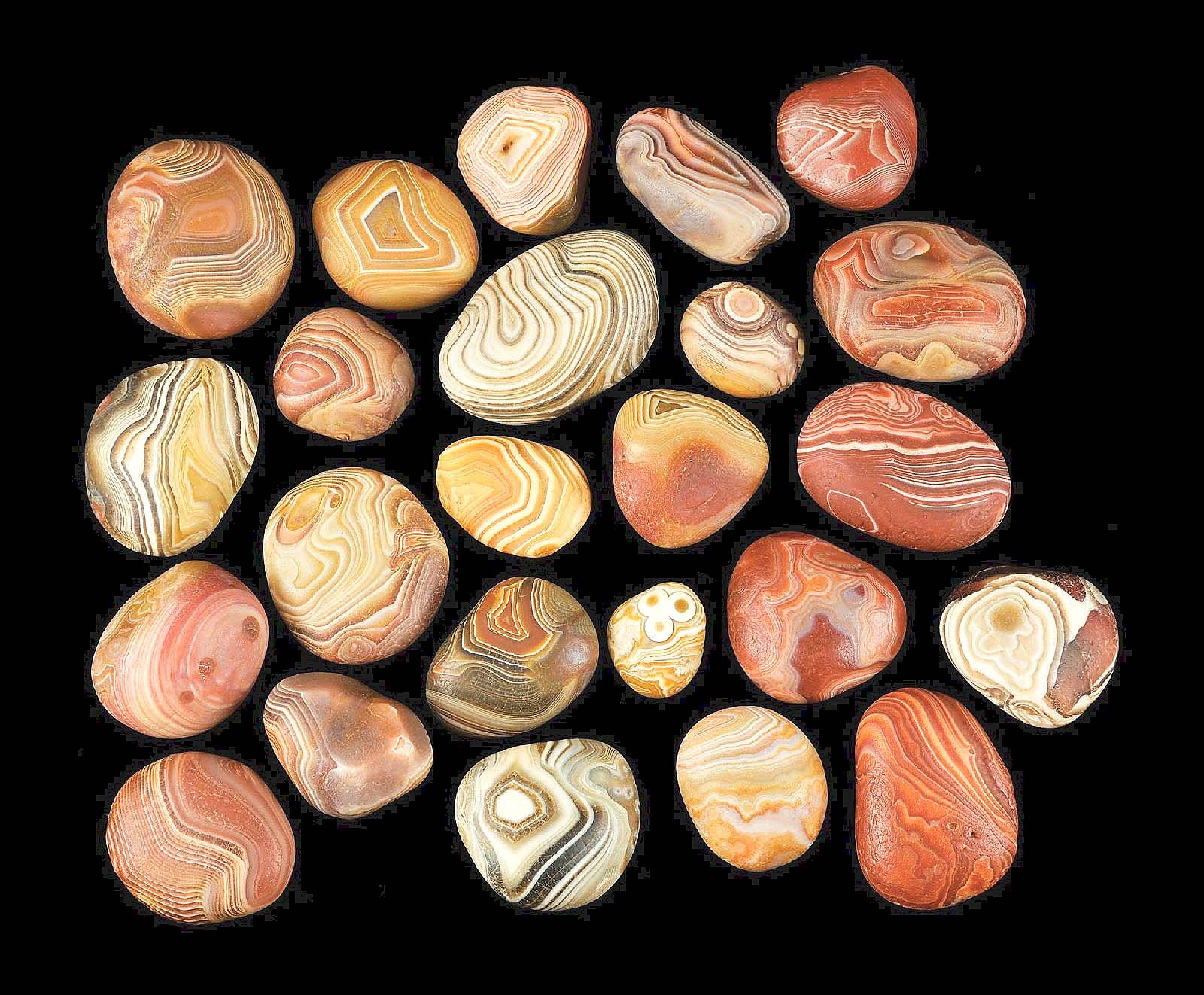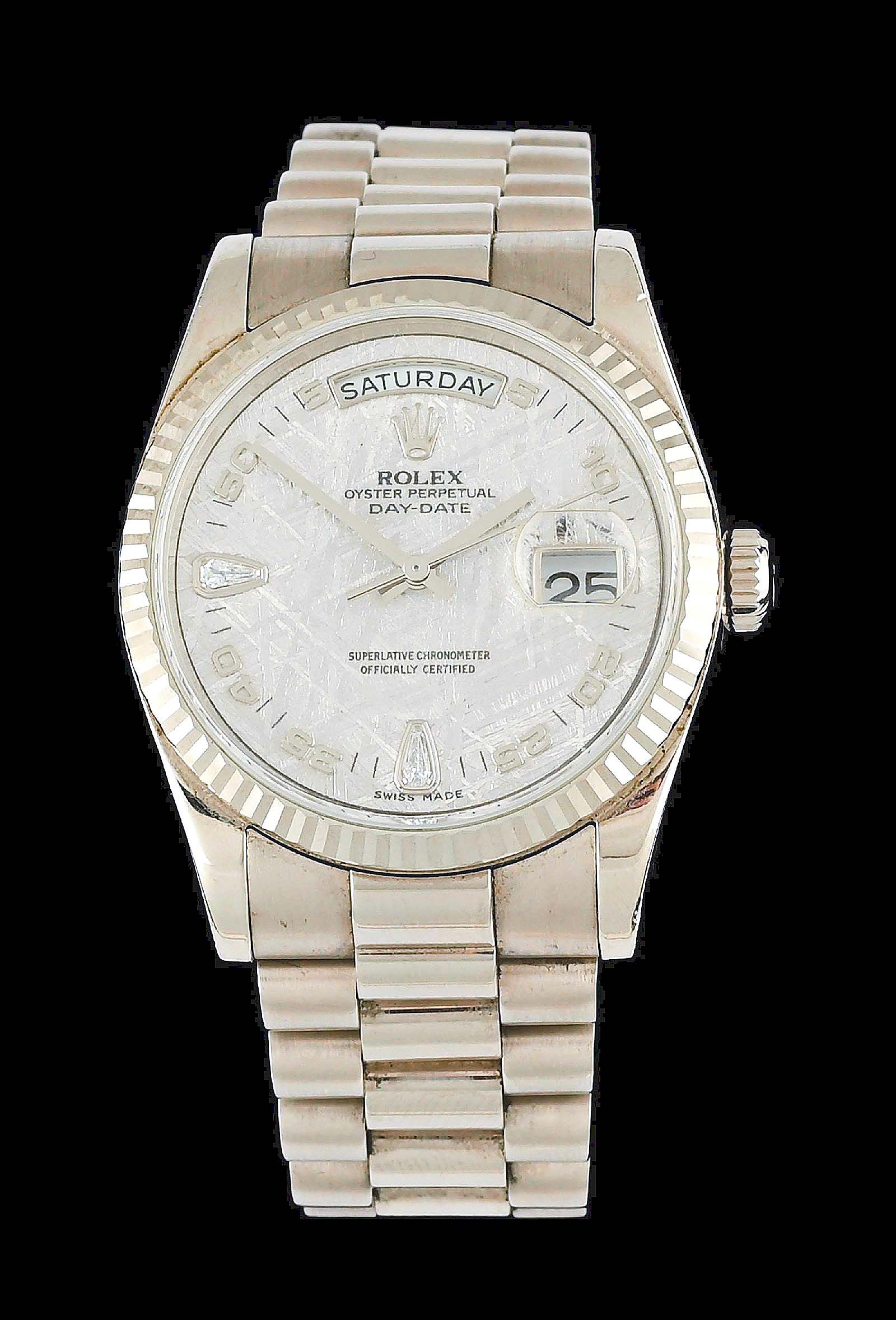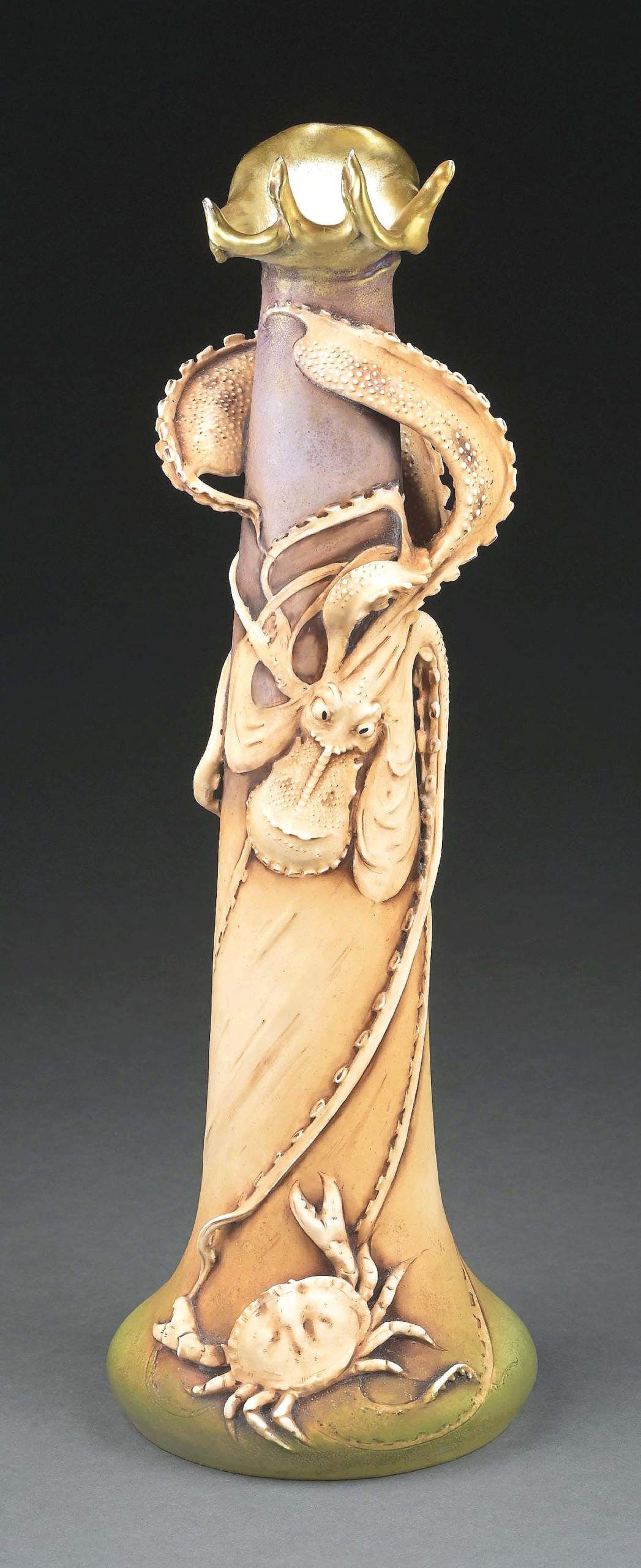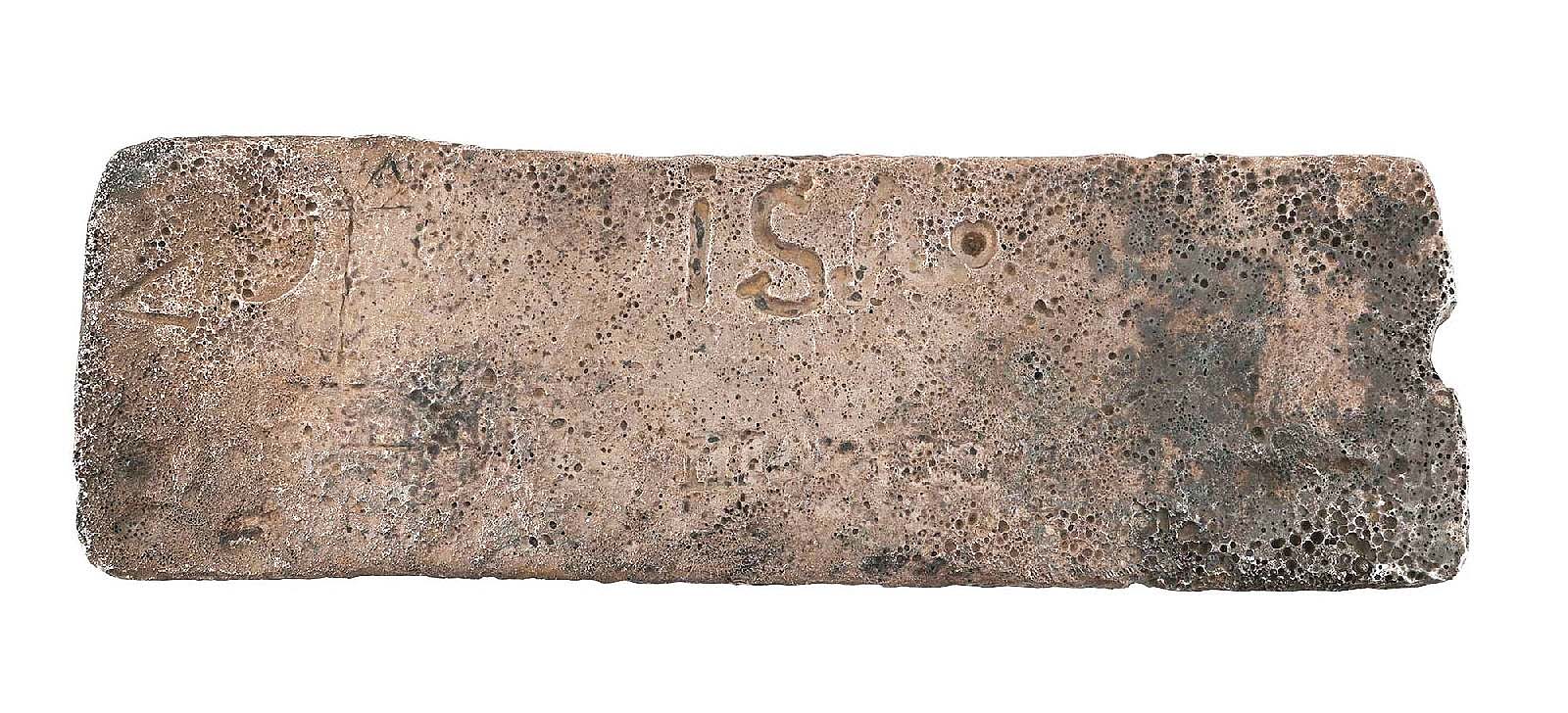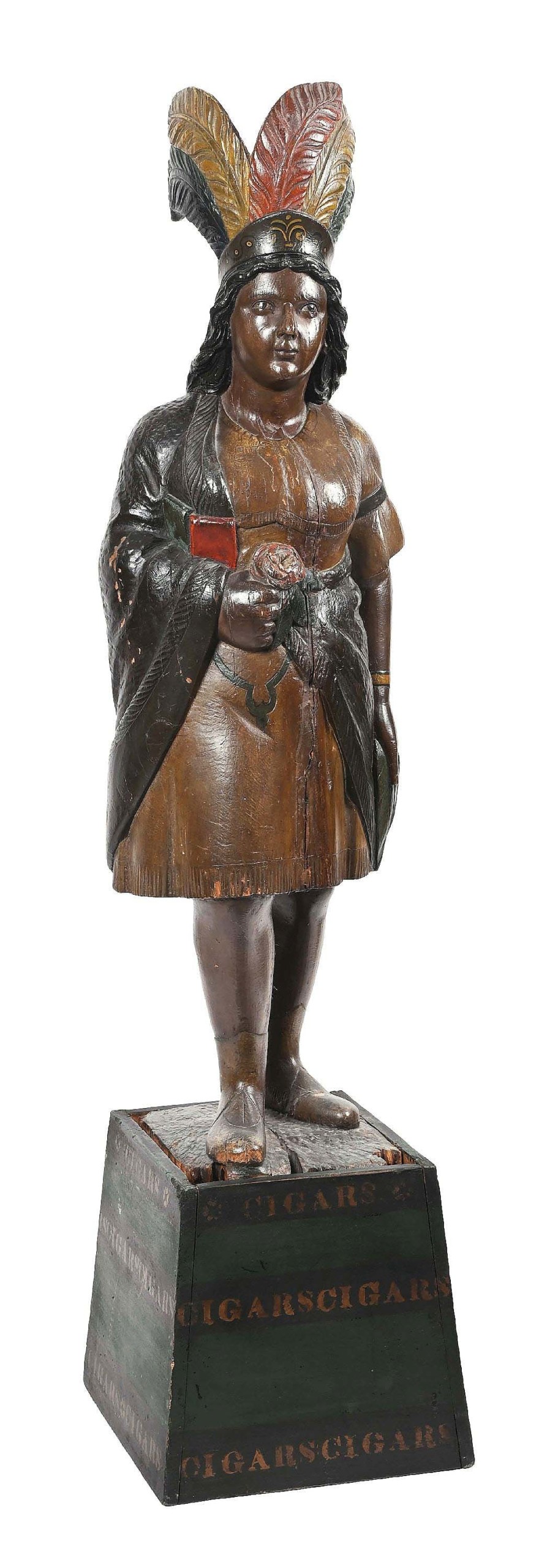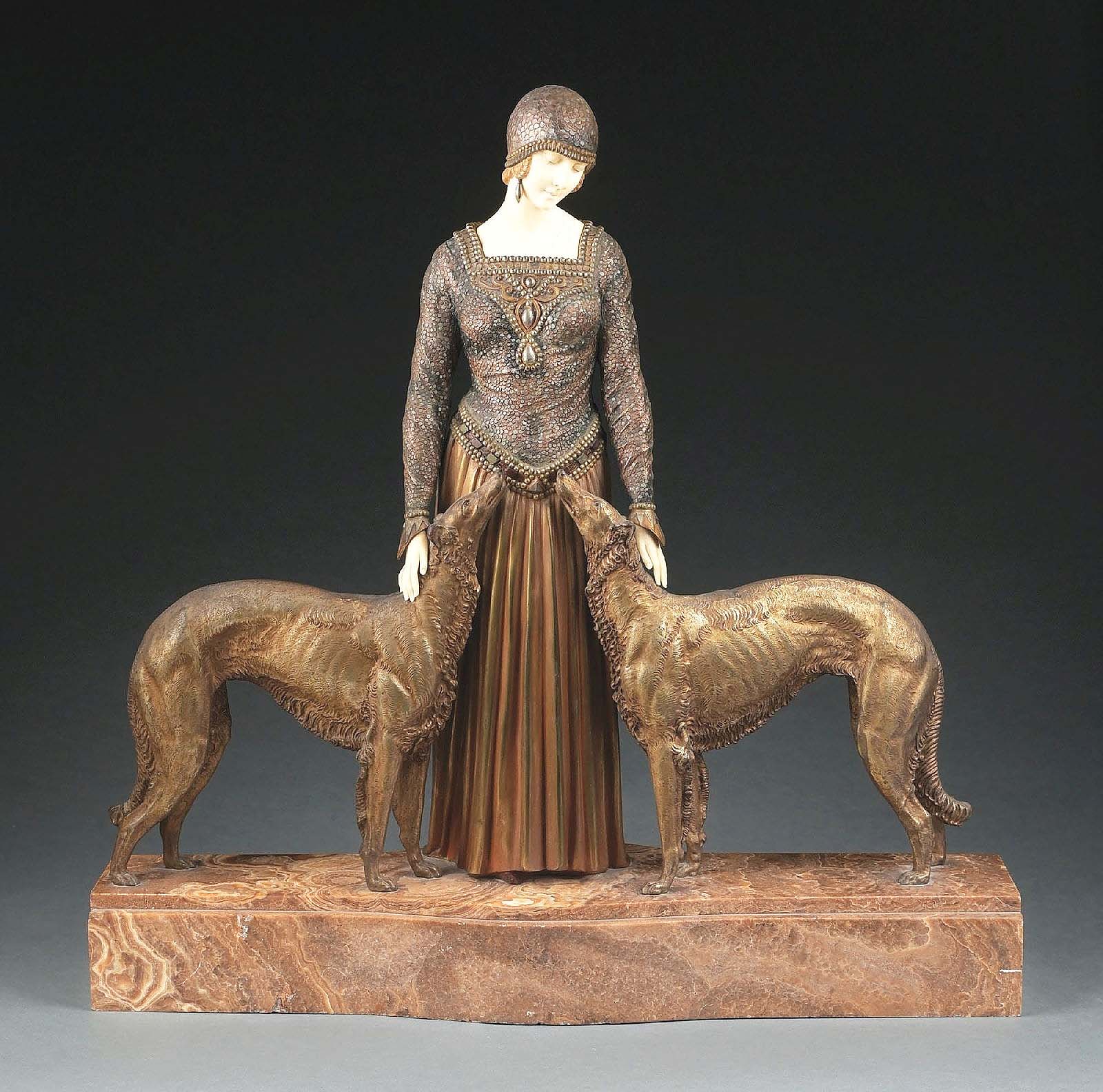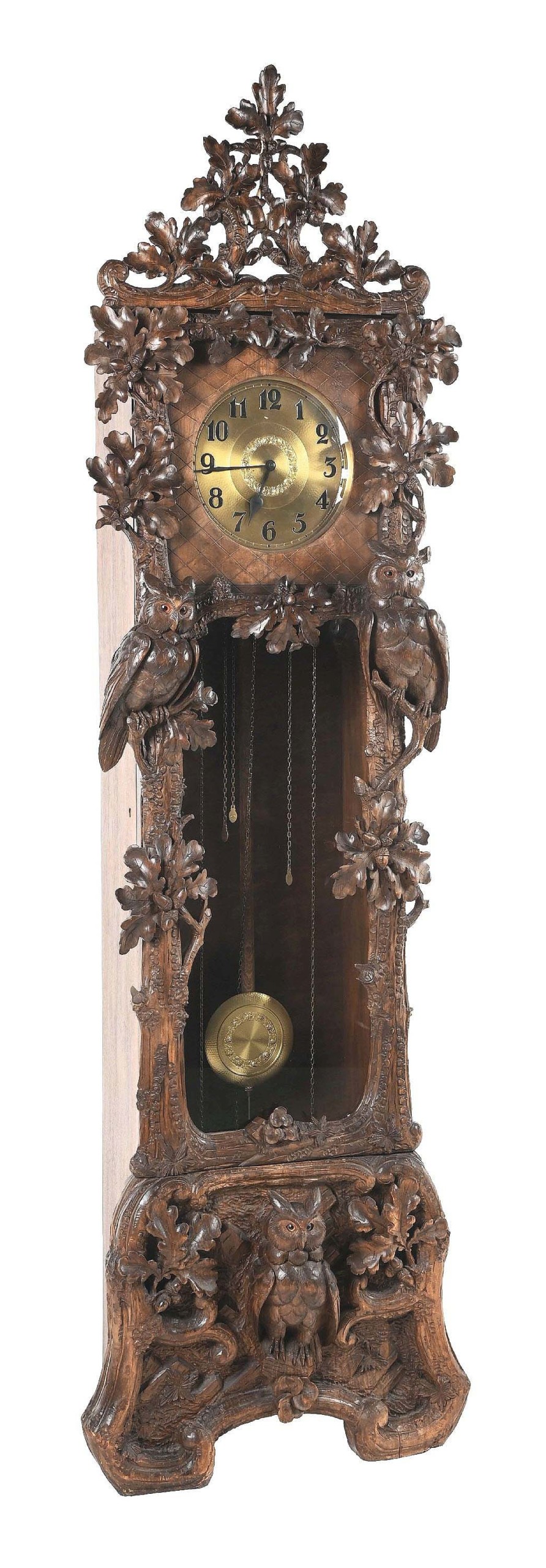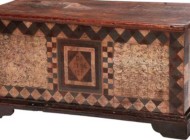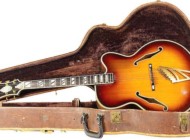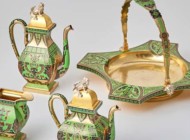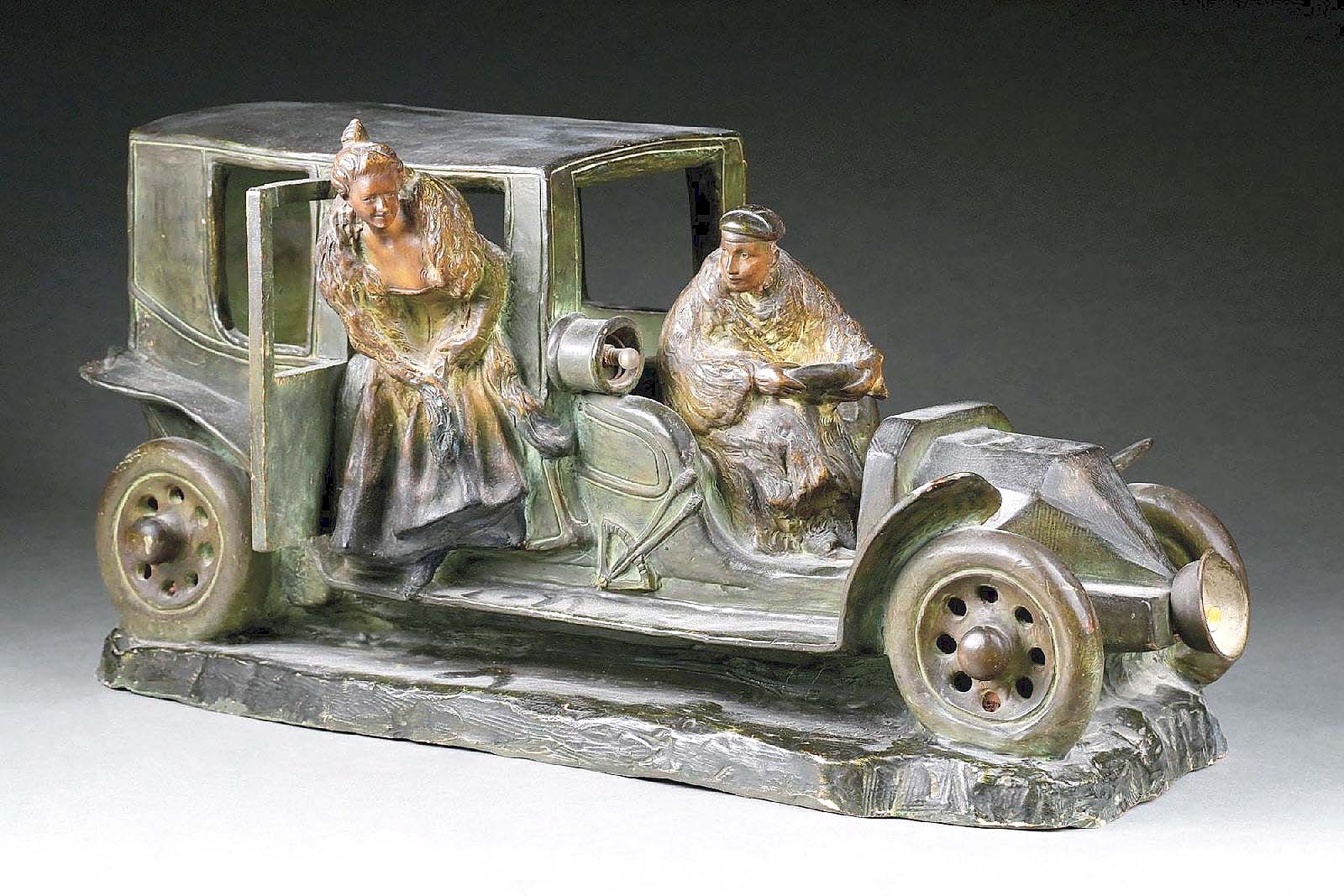
Signed “Salesio,” this untitled terracotta sculpture by Salesio Lugli (Italian, 1869-1936), circa 1906, 25½ inches long, drove to $184,500, the highest price of both days of the sale ($5/20,000).
Review by Kiersten Busch
DENVER, PENN. — Luxury watches, Tiffany lamps, American art and rare Amphora pottery were just some of the highlights of Morphy Auctions’ June 11-12 Fine & Decorative Arts Auction, which, over the course of the two days, offered more than 1,400 lots and earned an excess of $2.7 million.
President Dan Morphy shared, “The sale attracted very strong and competitive bidding across both online and phone platforms. We also saw enthusiastic participation from an international group of bidders across multiple categories, with coins and Bakelite radios in particular delivering exceptional results.”
Social media and marketing associate Shayne Brunsch added, “The bidding pool reflected a diverse global presence with strong participation across key markets and particularly active online and phone bidding throughout the sale.”
Day one was led by “Portrait of a Young Girl in a Green Dress,” an oil on canvas by John Bradley that had provenance to a private Pennsylvania collection. According to catalog notes, this painting was “a close relative to ‘Little Girl in Lavender’ (circa 1840) in the collection of The National Gallery of Art, Washington, DC.” The work was signed “J. Bradley, 128 Spring St. New York” to its lower right and stamped “Prepared by The O’Keefe New York” on its reverse. Previously sold at Sotheby’s, New York, for $78,000 in May 2005, it earned $73,800 in this sale, still surpassing its $20/50,000 estimate.
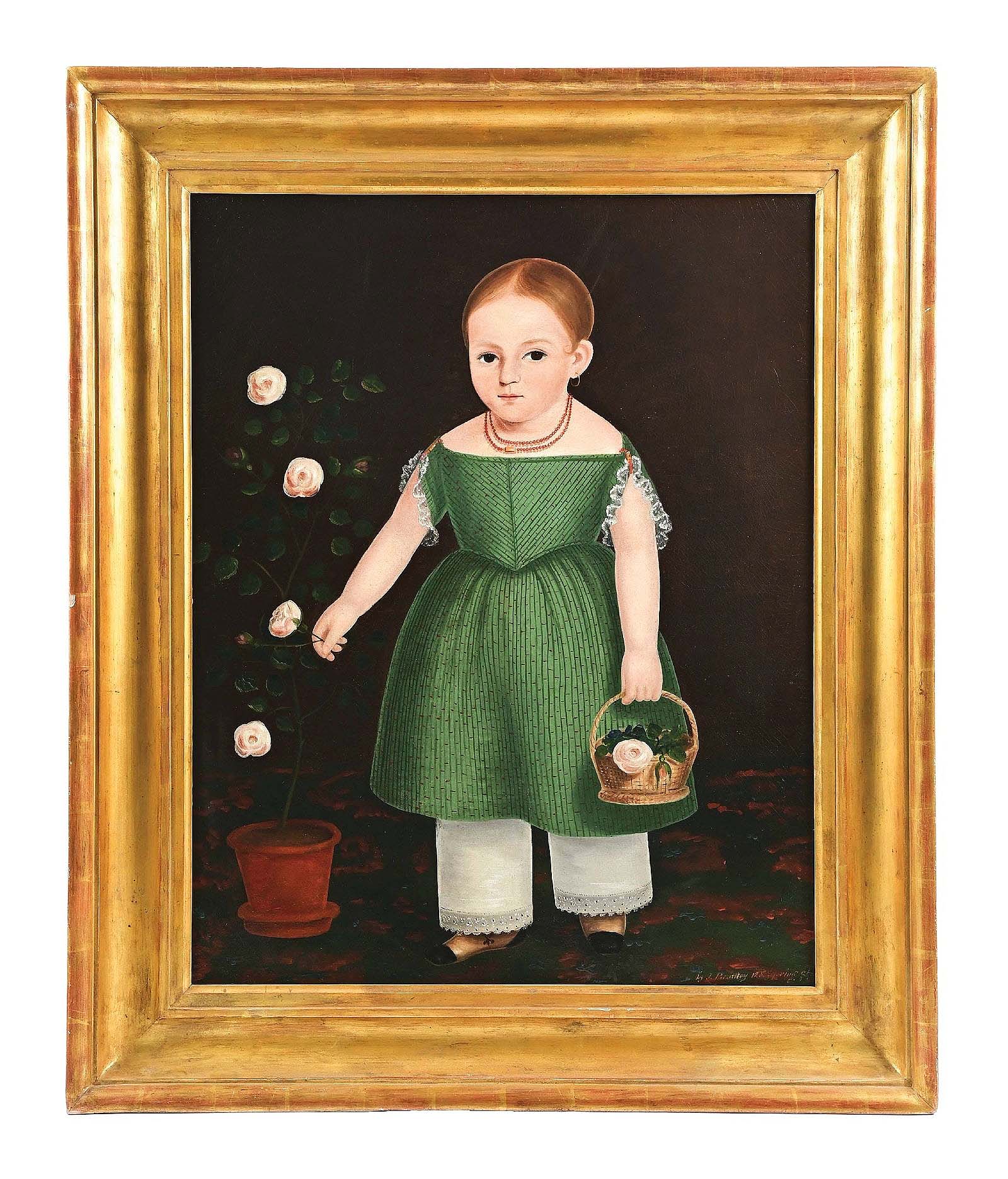
“Portrait of a Young Girl in a Green Dress” by John Bradley (New York, active 1832-1847), oil on canvas, 42¾ by 35½ inches framed, came from a private collection in Pennsylvania and earned the highest price on day one, $73,800 ($20/50,000).
Of the additional 25 lots of oil paintings on offer on the first day, four more were portraits, all of women or young girls, ranging in price from $800 for an untitled and unsigned portrait of a young girl, to $246 for “Two Girls of Naples” by G. De Martini (1838-1912).
Ship portraiture was also popular with bidders, as all six lots of the maritime works offered sailed to new homes. The brigade was led by “U.S. Mail Paddle Steamer George Law” by James Bard, which earned $36,900. Painted circa 1853, the oil on canvas was illustrated in J. & J. Bard, Picture Painters by A. J Peluso (New York City: Hudson River Press, 1977); it floated to $36,900. Another Bard work, “Matteawan,” done by James and his brother, John, changed hands for $29,520.
There were 16 lots of agate, offered on the first day, ranging in price from $92 for a piece of Brazilian agate, to $34,440 for a group of Chinese agates. The latter was composed of 24 Chinese rain flower agate pebbles, most of which were natural and unworked. According to catalog notes, “Due to the Three Gorges Dam project on the Yangtze River, obtaining these incredible agates has become nearly impossible because most of the collecting area is now flooded.” The scarcity of the gemstones may have been part of the reason why bidders pushed the lot to more than three times the high end of its $7/10,000 estimate.
Lighting up for $30,750 was a Tiffany Studios Turtleback leaded glass hanging lamp, which led a group of five authentic Tiffany lamps. The shade of this example had a background consisting of streaked butterscotch and amber-colored glass and was finished in its original brown patina with dusty verdigris accents. A banded Dogwood leaded glass table lamp ($13,530), a seven-light Lily lamp with an art glass shade ($7,995), a damascene counter balance desk lamp ($4,920) and a Favrile glass candle lamp ($1,353) also changed hands.
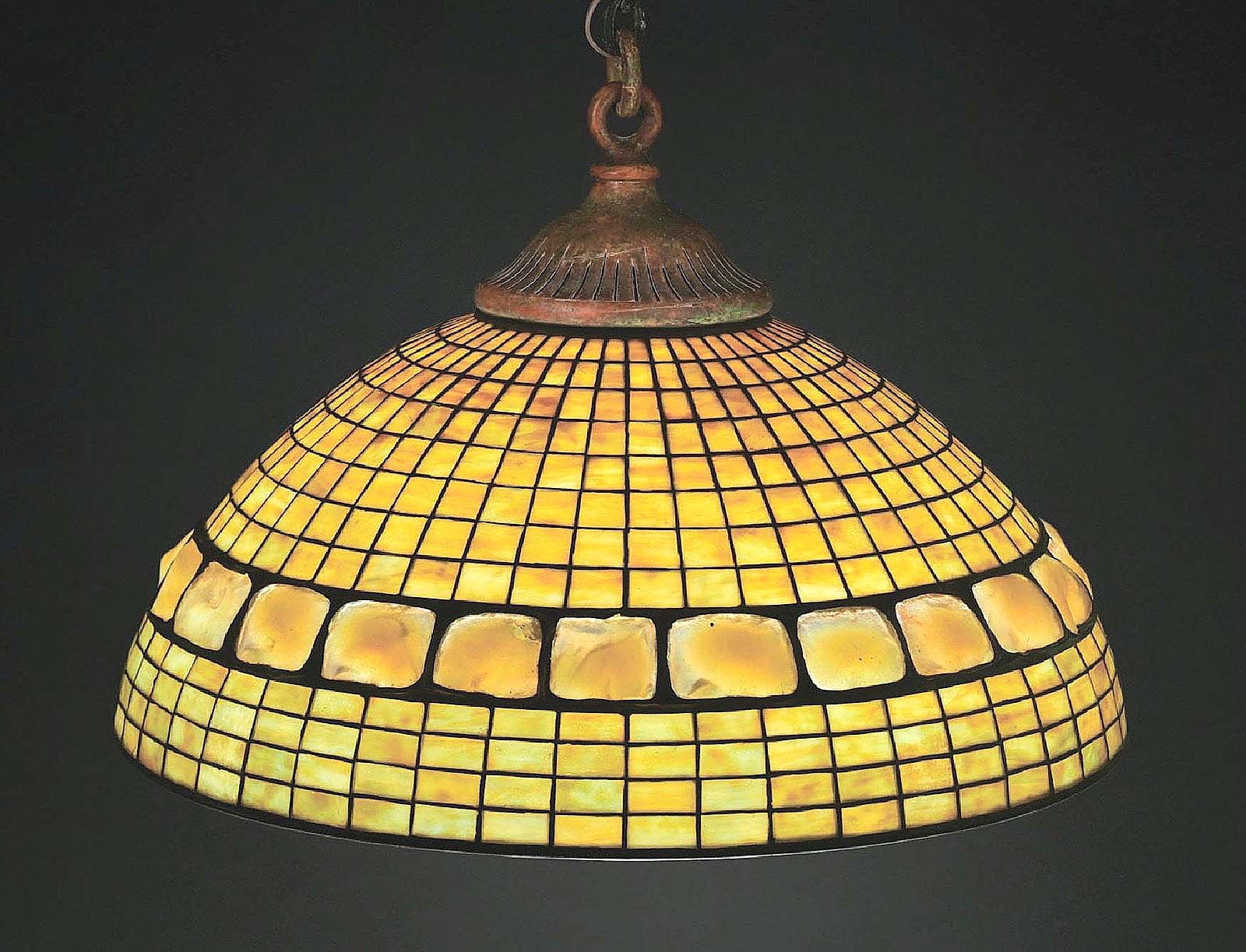
This Tiffany Studios Turtleback leaded glass hanging lamp, 26 inches in diameter, was signed “Tiffany Studios New York” on its shade and was finished in its original brown patina; it lit up for $30,750 ($10/15,000).
Amphora pottery was represented by 20 lots, with the highest price — $19,680 — earned by an octopus and crab vase with “the best modeling we have seen to date,” according to catalog notes. The 19¾-inch-tall vase, made circa 1900, was impressed with an RSTK mark and had multi-colored glazes with an applied gold gilt. It was illustrated in both Richard Scott’s Ceramics from the House of Amphora (Sidney, Ohio: Richard L. Scott, 2004) and Byron Vreeland’s Monsters & Maidens: Collector’s Edition (Los Angeles: Fledermaus Press, 2011).
Additionally, a never-been-seen-before Amphora pottery vase depicting a double-headed water serpent fighting a mythological prehistoric fish was offered at auction for the first time, earning $17,220 against a $12/18,000 estimate.
The second day of the sale saw the overall highest price cross the block — $184,500 — which was awarded to a 25½-inch-long, untitled terracotta sculpture by Salesio Lugli. Made circa 1906, the sculpture depicted a 1905 automobile with a chauffeur and a woman passenger; it drove to more than nine times the high end of its $5/20,000 estimate.
One other terracotta sculpture was offered during the sale, a Santa figure by the German manufacturer Villeroy & Boch, which realized the second-highest price of the second day, $79,950. The body of the figure contained small hooks, which were presumably used to hang ornaments or candy off of. It also came with a fir tree and a custom-made wooden base. Catalog notes explained that it “was believed to be made for bigger department stores to put in a window.”
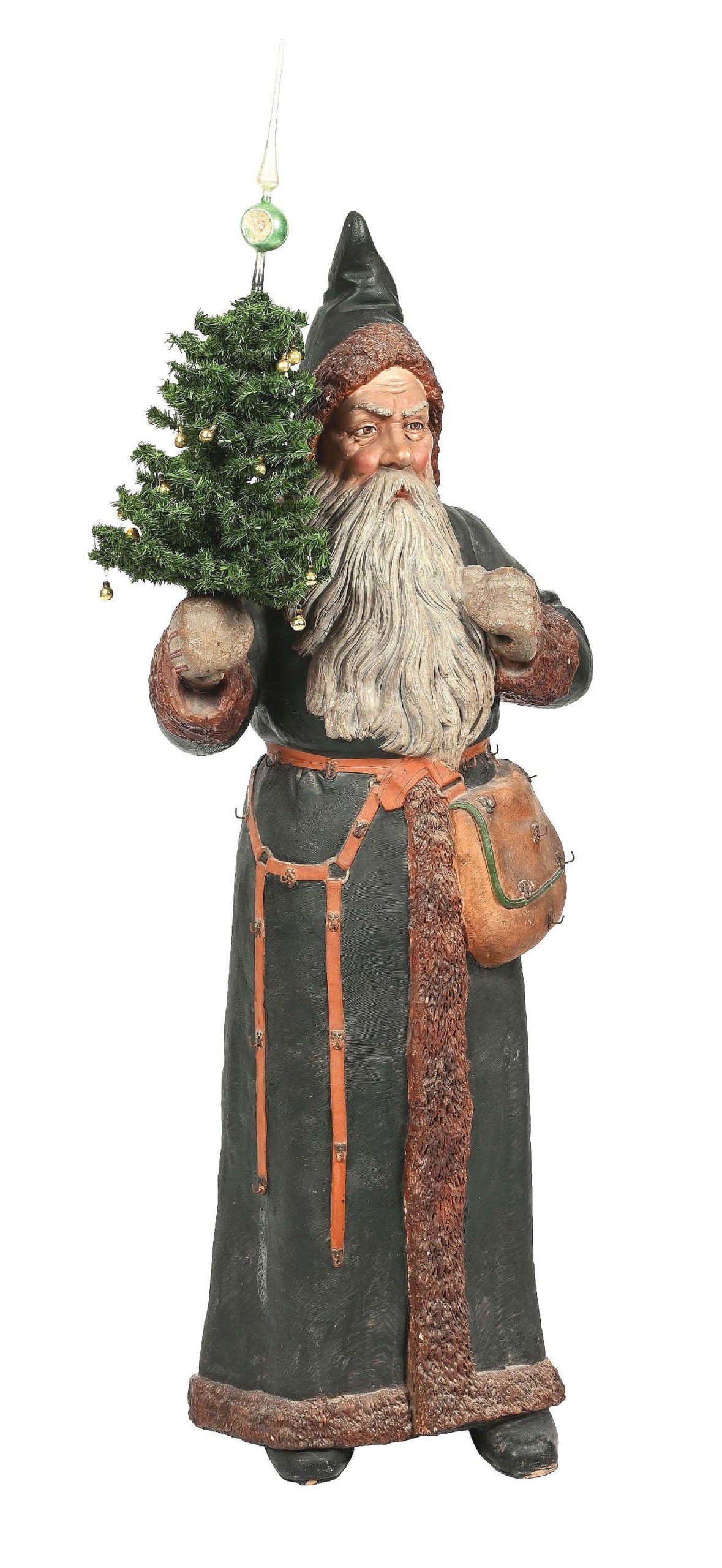
Made by Villeroy & Boch, Germany, this terracotta Santa figure was “one of few examples known,” according to catalog notes; it was raised to a festive $79,950 ($20/30,000).
Santa was not the only figure to gain significant bidder attention. Two carved Native American cigar store statues also earned some of the highest prices of the sale. A carved wooden Native American woman holding a rose and tobacco package bloomed to $41,820, surpassing its $15/30,000 estimate. It was attributed by its consignor to Brooklyn-based Scottish carver Samuel A. Robb, who may have begun his professional woodcarving in 1864, according to catalog notes. The second carving, a circa 1880s cigar store Native American figure, was made by Robb and retained its original polychrome paint; it shot to $38,400.
Silver, both in the form of coins and bars, made up a little more than 30 lots on the second day. The group was led by a silver bar sourced from the Spanish shipwreck of the Atocha, which breached its $30/45,000 estimate to achieve $56,070. The 15-inch-long bar weighed 73 pounds and eight ounces, and came with a letter of authenticity, which verified its weight, tag number and manifest number. A Johnson Matthew 100-ounce silver bar ($3,936) and a lot of three 10-ounce silver bars ($1,168) also found new homes.
Black Forest carvings were well-represented by 38 lots, ranging in price from $123 to $24,320. The latter was a tall two-panel grandfather case clock with three bears and grape vine decorations. Made circa 1925 — approximately six years after Hans Winterhalder took over his family’s clockmaking business based in Neustadt, Black Forest, Germany — this example was marked “HWN” and “Hawina,” two of the company’s trademarked names.
Black Forest items are usually known for their animated bear carvings, but a few other animals also found new owners during the sale, including a Nineteenth Century carved eagle wall mirror ($615), a pair of owls standing on a stack of books ($1,088) and a dog ($1,968).
Morphy’s next Fine & Decorative Arts Auction will take place on December 3-4. Before that, the firm will have its Automobilia, Petroliana & Railroadiana Auction on July 16-17. Prices quoted include buyer’s premium as reported by the auction house. For information, 877-968-8880 or www.morphyauctions.com.

